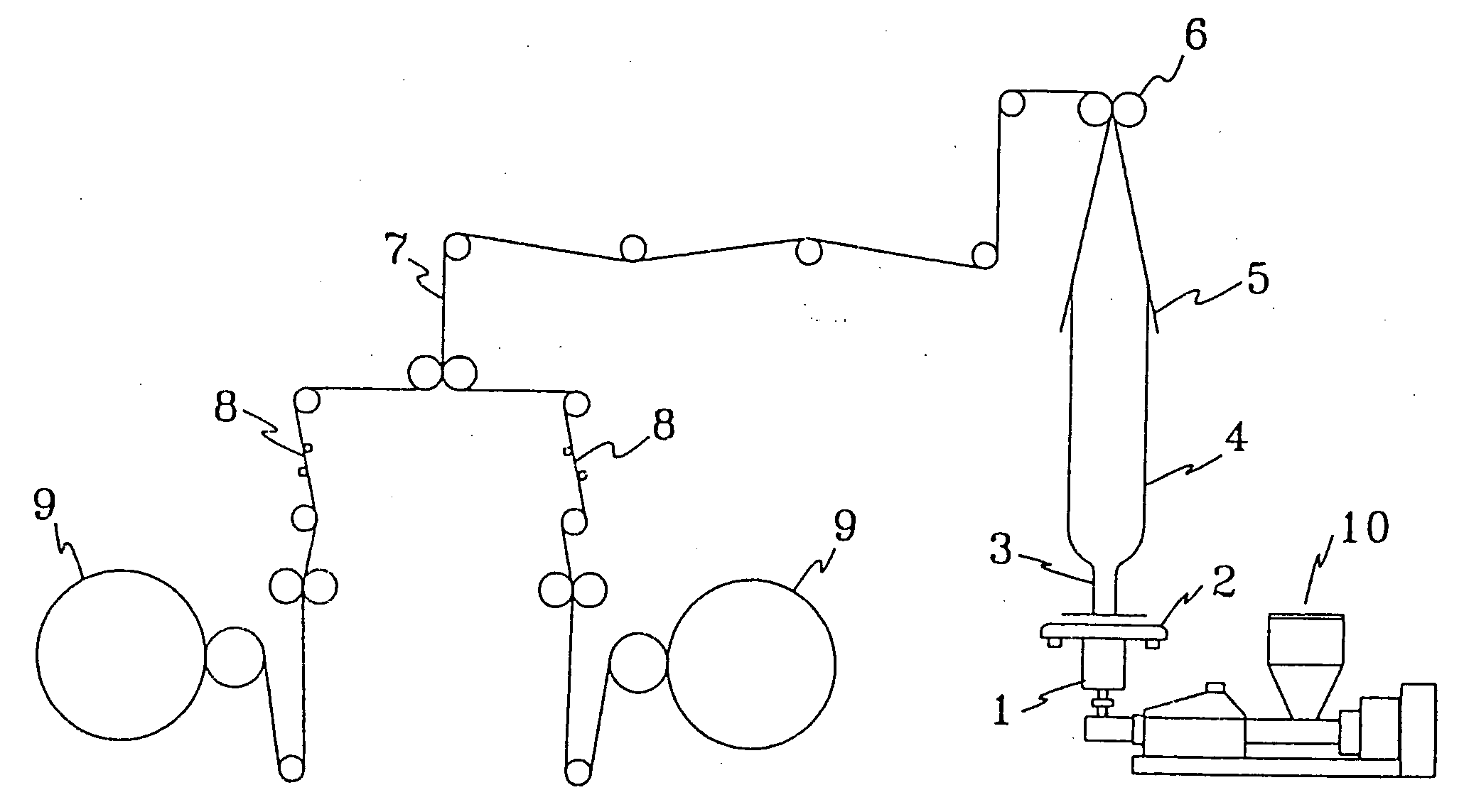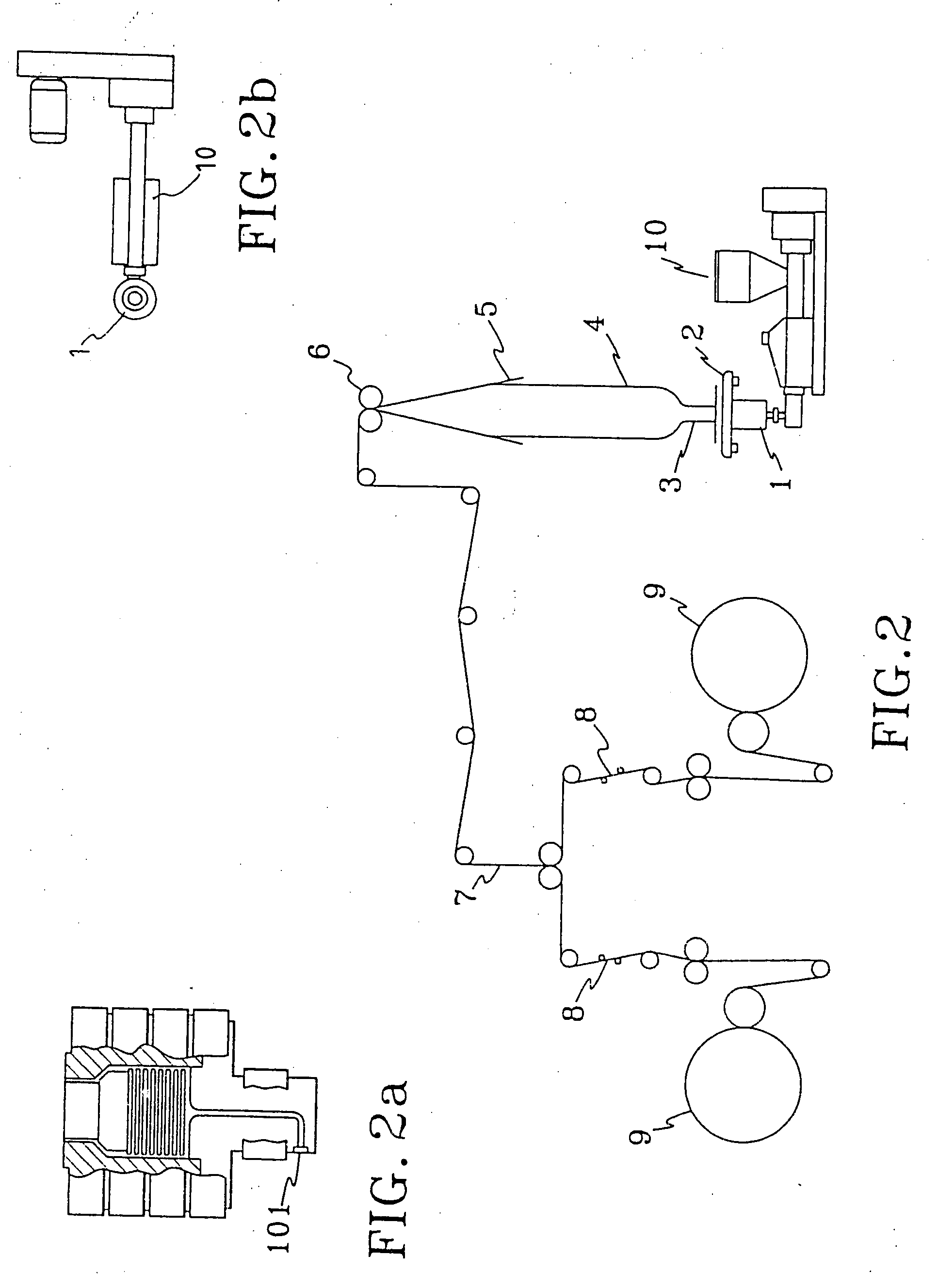Process for the manufacture of environmentally friendly papers and compositions therefor
a technology of composition and paper, which is applied in the field of process for the manufacture of environmentally friendly papers and compositions therefor, can solve the problems of poor foldability, inferior paper made from pulp, and great differences in latitudinal and longitudinal tearing strength, and achieves no tearing ability, or still inferior to the paper made from pulp
- Summary
- Abstract
- Description
- Claims
- Application Information
AI Technical Summary
Benefits of technology
Problems solved by technology
Method used
Image
Examples
example 1
Single-Layered Environmental Friendly Paper
[0053] A single-layered environmental friendly paper is produced from a combination of 60% by weight of inorganic mineral powders (28% by weight of calcium carbonate, 7% by weight of titanium dioxide, and 25% by weight of diatomaceous earth), 38% by weight of polyethylene (20% by weight of high density polyethylene, 10% by weight of low density polyethylene, and 8% by weight of medium density polyethylene), and 2% by weight of additives (0.8% by weight of beta-(3,4-epoxycyclohexyl)ethyltrimethoxy-silane, 0.4% by weight of N-oleyl palmitamide, and 0.8% by weight of N,N-bis(2-hydroxyethyl)stearyl amine). The combination is subjected to the steps of mixing, extruding, milling, and polymerizing, and it results in granulates. The granulates are fed into the extruder as shown in FIG. 2 and single-layered environmental friendly papers each having a thickness of 31 μm and 52 μm are produced depending on the parameters selected.
example 2
Single-Layered Environmental Friendly Paper
[0054] A single-layered environmental friendly paper is produced from a combination of 70% by weight of inorganic mineral powders (35% by weight of calcium carbonate, 6% by weight of titanium dioxide, 24% by weight of diatomaceous earth, and 5% by weight of clay), 28% by weight of polyethylene (200%0 by weight of high density polyethylene, and 8% by weight of medium density polyethylene), and 2% by weight of additives (0.8% by weight of beta-(3,4-epoxycyclohexyl)ethyltrimethoxy-silane, 0.4% by weight of N-oleyl palmitamide, and 0.8% by weight of N,N-bis(2-hydroxyethyl)stearyl amine). The combination is subjected to the steps of mixing, extruding, milling, and polymerizing and results in granulates. The granulates are fed into the extruder as shown in FIG. 2, and single-layered environmental friendly papers each having a thickness of 73 μm and 82 μm are produced depending on the parameters selected.
example 3
Single-Layered Environmental Friendly Paper
[0055] A single-layered environmental friendly paper is produced from a combination of 80% by weight of inorganic mineral powders (35% by weight of calcium carbonate, 5% by weight of titanium dioxide, 35% by weight of diatomaceous earth, and 5% by weight of talc), 18% by weight of polyethylene (high density polyethylene), and 2% by weight of additives (0.8% by weight of beta-(3,4-epoxycyclohexyl)ethyltrimethoxy-silane, 0.4% by weight of N-oleyl palmitamide, and 0.8% by weight of N,N-bis(2-hydroxyethyl)stearyl amine). The above combination is subjected to the steps of mixing, extruding, milling, and polymerizing and results in granulates. The granulates are fed into the extruder as shown in FIG. 2 and single-layered environmental friendly papers each having a thickness of 102 μm and 116 μm are produced depending on the parameters selected.
PUM
| Property | Measurement | Unit |
|---|---|---|
| temperature | aaaaa | aaaaa |
| distance | aaaaa | aaaaa |
| thickness | aaaaa | aaaaa |
Abstract
Description
Claims
Application Information
 Login to View More
Login to View More - R&D
- Intellectual Property
- Life Sciences
- Materials
- Tech Scout
- Unparalleled Data Quality
- Higher Quality Content
- 60% Fewer Hallucinations
Browse by: Latest US Patents, China's latest patents, Technical Efficacy Thesaurus, Application Domain, Technology Topic, Popular Technical Reports.
© 2025 PatSnap. All rights reserved.Legal|Privacy policy|Modern Slavery Act Transparency Statement|Sitemap|About US| Contact US: help@patsnap.com



